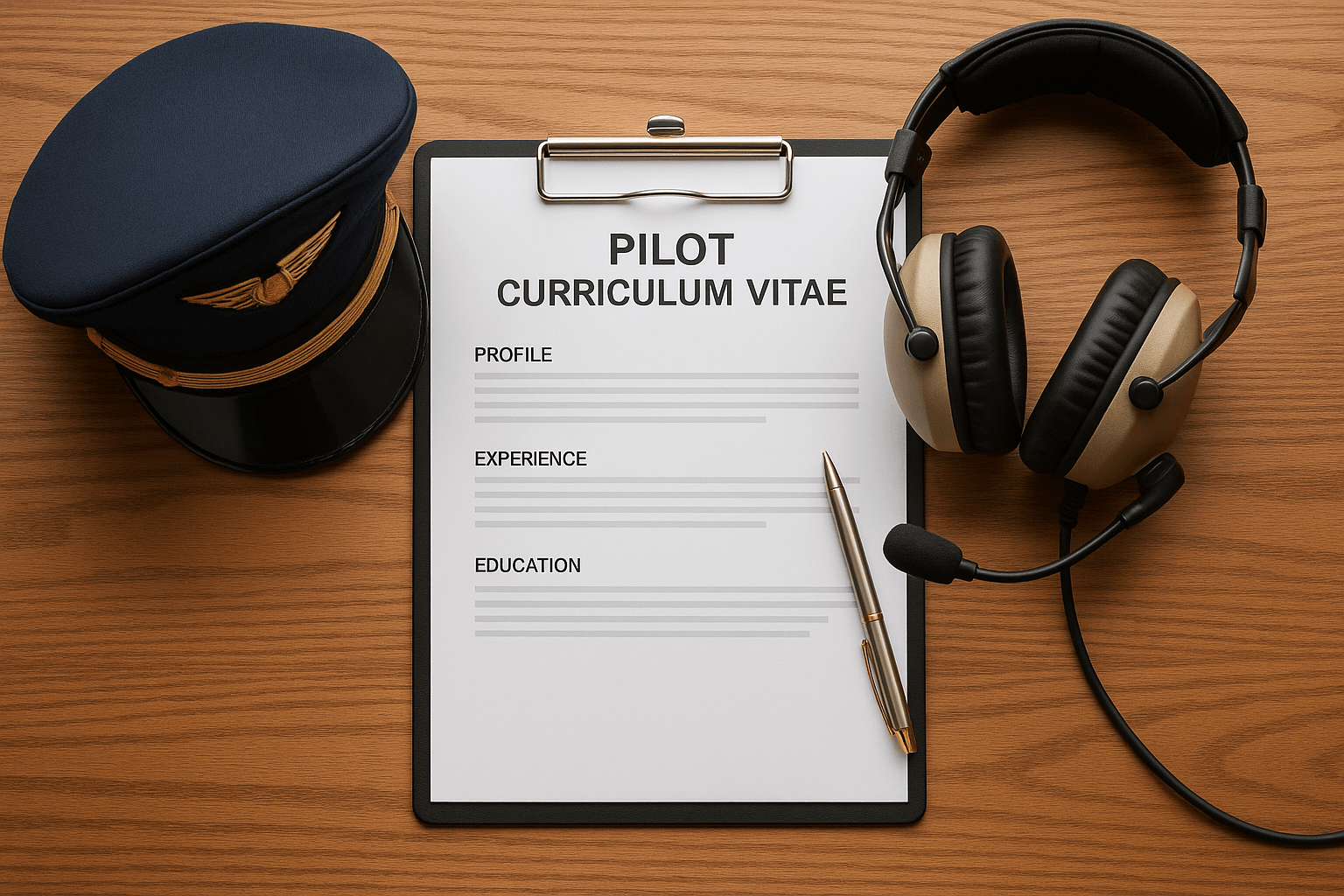What Airlines Really Look For in Pilot CVs
In a competitive and highly regulated field like aviation, your CV is more than just a piece of paper—it's your boarding pass to a new opportunity. Airlines receive hundreds of applications for each pilot vacancy, and your CV must stand out for all the right reasons. So, what do recruiters and airline HR departments really look for in a pilot's CV?

1. Clear Structure and Readability
First impressions matter. A clean, well-organized CV shows professionalism and attention to detail—both vital in aviation. Use clear headings, bullet points, and keep the layout consistent. Avoid large blocks of text and opt for concise, impactful descriptions.
2. Licenses and Certifications
List your valid licenses right at the top: ATPL, CPL, or MPL, and mention the issuing authority (EASA, FAA, ICAO). Also, specify any type ratings you hold, along with expiry dates. Airlines need to know at a glance if you are legally fit to fly their aircraft.
3. Flight Hours
Recruiters immediately scan for total flight hours, recent hours, and hours on type. Break this down by aircraft, simulator, and multi-engine time. Highlight recent flying experience, especially on the aircraft type relevant to the role.
4. Employment History with Details
Focus on your most recent and relevant positions. Include airline names, base locations, aircraft types, and your role (Captain, First Officer, etc.). Adding specific routes or operational environments (e.g., long-haul, desert, mountainous) adds context.
5. Soft Skills and Safety Culture
Aviation employers value teamwork, communication, and adherence to SOPs. Mention CRM training, language proficiencies (especially English ICAO Level), and any participation in safety or leadership initiatives.
6. Avoiding Common Mistakes
Avoid vague terms like "team player" or "fast learner" without context. Never lie about flight hours or type ratings—everything is verifiable. Ensure there are no grammar or spelling mistakes.
7. Digital Considerations
Most airlines now use ATS (Applicant Tracking Systems), so include relevant keywords like "A320 type-rated," "TRI/TRE," or "ICAO English Level 5." Save your CV as a PDF to preserve formatting.
A well-crafted CV tailored to the specific airline and position can significantly improve your chances of moving forward in the recruitment process. In aviation, precision and clarity matter—start with your CV.



